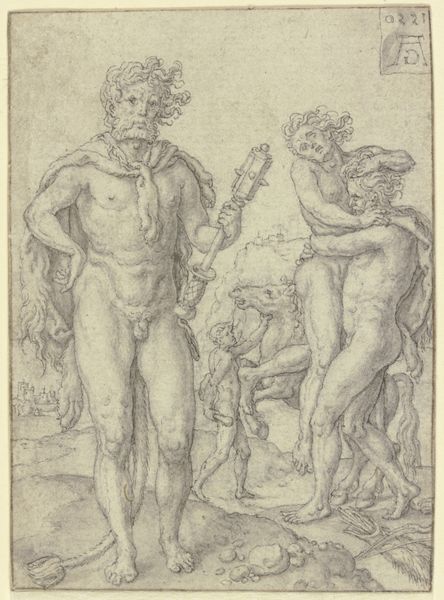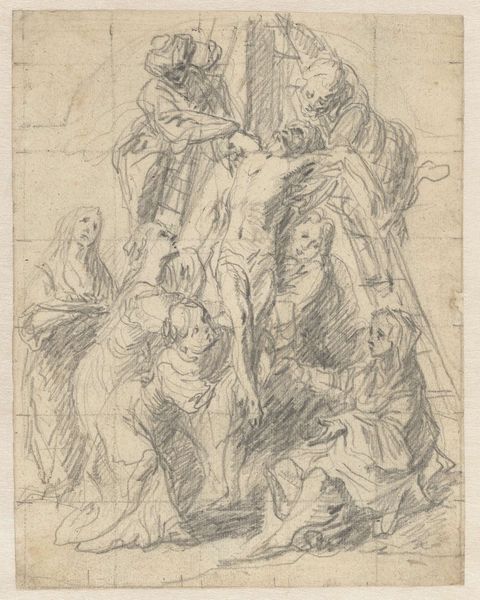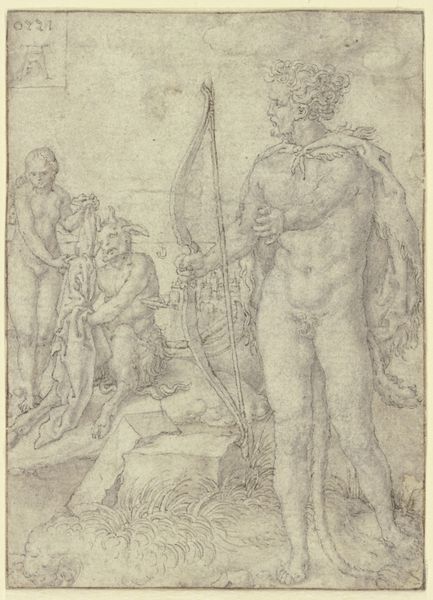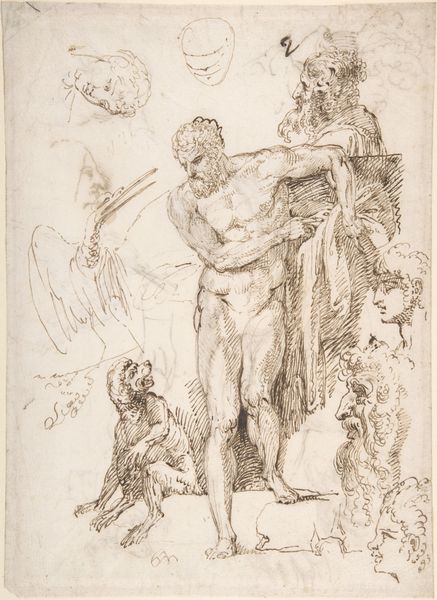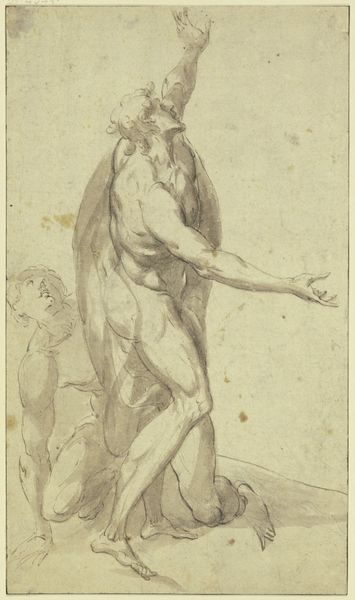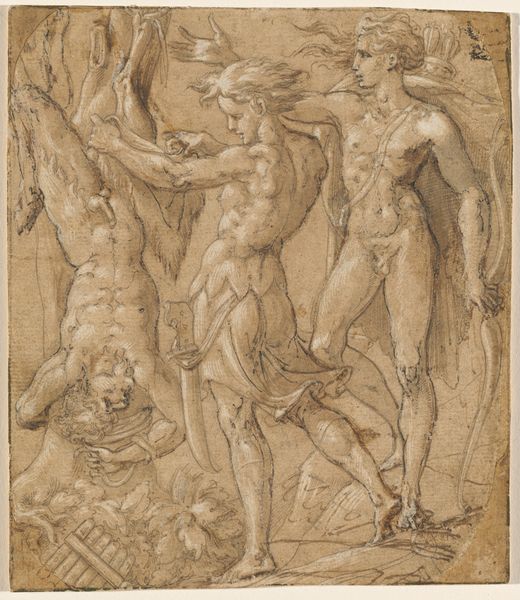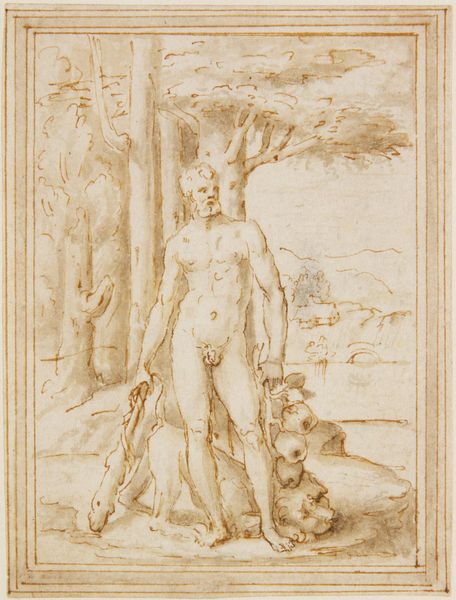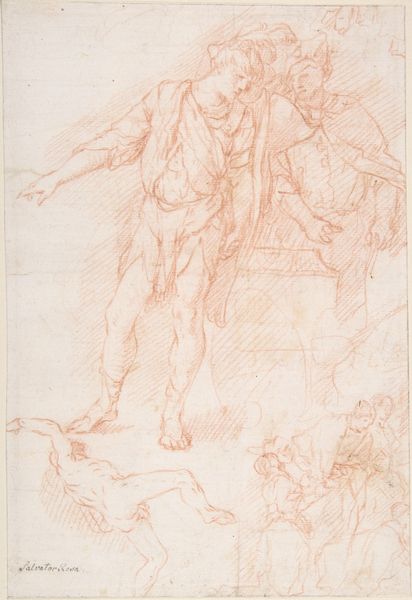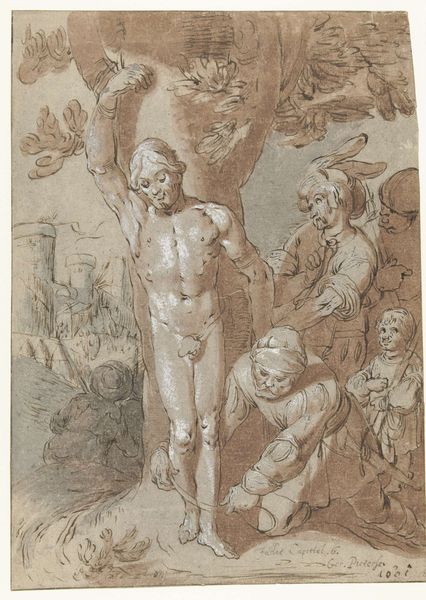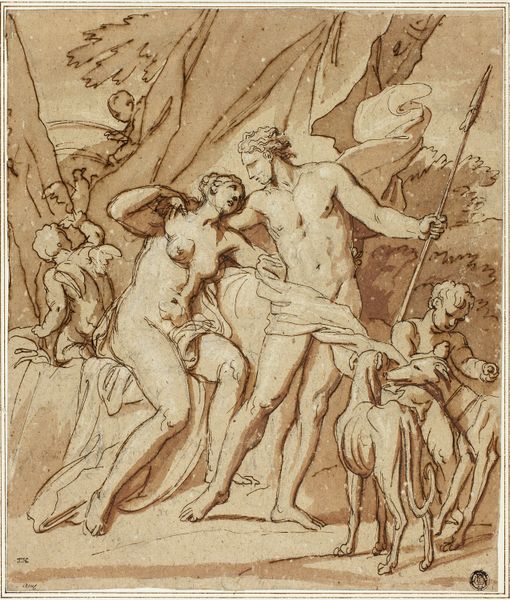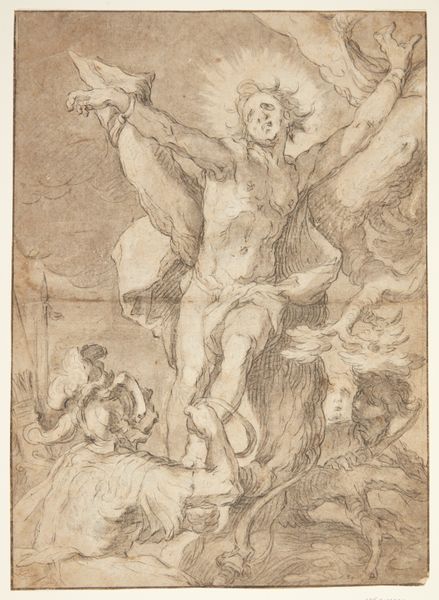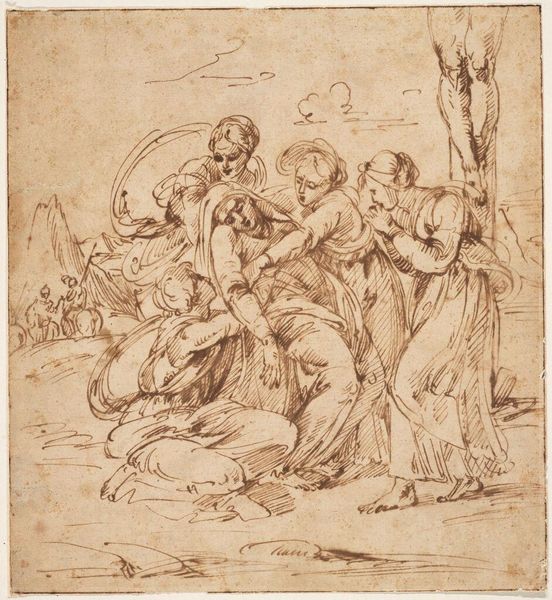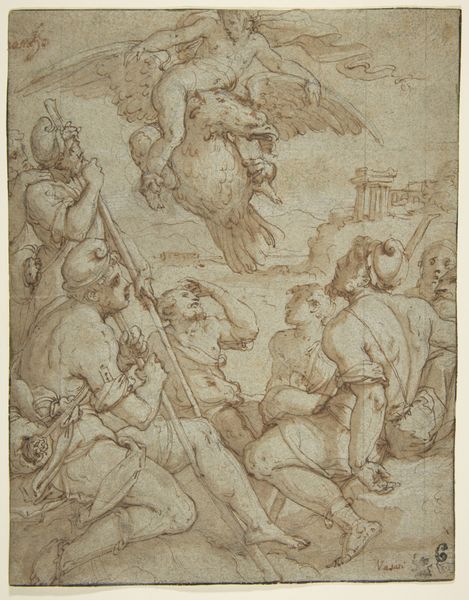
drawing, chalk
#
drawing
#
baroque
#
figuration
#
chalk
#
history-painting
Copyright: Public Domain
Editor: Here we have Hans Ulrich Franck's "Marter des Heiligen Sebastian," or "The Martyrdom of Saint Sebastian," rendered in chalk. It’s incredibly moving – Saint Sebastian’s suffering is palpable. What strikes you about this drawing? Curator: The power of this Baroque drawing lies in understanding its context. This wasn’t merely devotional art, but rather an assertion of religious and political authority during the Counter-Reformation. How do you interpret the presence of those onlookers? Editor: They seem detached, almost clinical in their observation of the saint's torment. It's unsettling. Curator: Exactly. Franck uses that detachment to amplify the pathos. Consider how the depiction of martyrdom served a socio-political purpose: it was a visual language used to reinforce faith, loyalty, and obedience in the face of religious division. What message might images like this send to a 17th-century audience? Editor: Maybe that true belief requires enduring even extreme suffering? It's like propaganda through pain. Curator: Precisely! And it wasn’t confined to the church. These images were circulated, collected, displayed in private homes, shaping public opinion and solidifying religious identity. Think about how the act of viewing itself becomes a participation in the power dynamics at play. Editor: So, it's not just about Sebastian's personal ordeal, but about controlling the narrative around faith and power. This makes me consider the museums housing them, and what social narratives are at play now. Thanks for highlighting the social-political role of images! Curator: Glad to have brought it up, thinking about these visual legacies shapes the way we consider the function of museums in our own time.
Comments
No comments
Be the first to comment and join the conversation on the ultimate creative platform.
